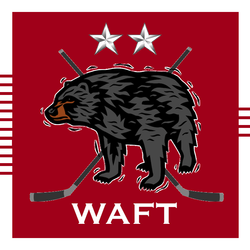1. Clarkson: 1.92
2. St. Lawrence: 1.75
3. Cornell: 1.50
4. Princeton: 1.33
4. Quinnipiac: 1.33
6. Colgate: 1.08
7. RPI: 0.83
8. Yale: 0.58
9. Dartmouth: 0.50
9. Harvard: 0.50
11. Brown: 0.33
12. Union: 0.17
All or nothing is not meant to be the message of this piece for this team. This team has truly started to gel in a way that is more important as the year goes on. Seniors are showing up both in leadership and on the scoresheet in big moments (game-winning OT goals, anyone?) and freshmen who never played like freshmen at all are continuing to hold steady in their production for this team.
But what remains is that the North Country appears to be the class of the league this season…for now. Is a #1 overall seed necessary to win an ECAC Hockey Championship? Absolutely not. Cornell has won both in its own building and in Potsdam. But, it would be more than just nice to host the playoffs in Ithaca again, whether for one weekend or a two-weekend affair. Cornell is and always has been a playoff team.
Before the break, Cornell went 6-2-1 in conference play. Since play has resumed, Cornell is 2-1-0 in conference play. With the hardest stretch of conference play starting now, Cornell will need to maintain its identity as a gritty, fun, energetic team. The next two weeks see a trip to the league-leading North Country and a trip to the playoff-contending Dartmouth-Harvard pair (And wouldn’t it be nice to sweep the Crimson again?) before returning home in February.
Don’t fool yourselves. This team is doing great things, but few will remember them if they end mid-February. But the journey to the playoffs is always a fun one that this author cannot wait to follow this team on. Raising a banner is the way into eternal memory for the Lynah Faithful. The path to doing so starts tonight at 6:00 pm in Cheel Arena. The character of this team is slowly becoming evident.



 RSS Feed
RSS Feed
